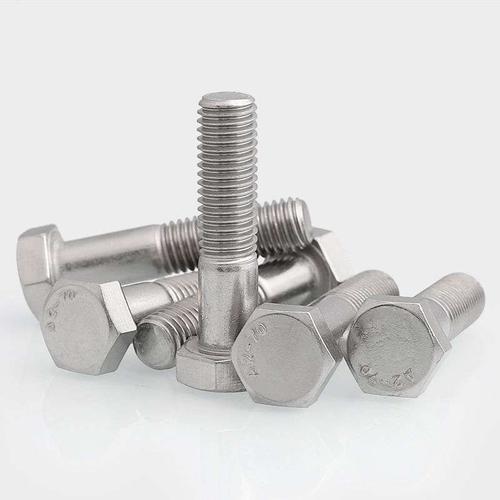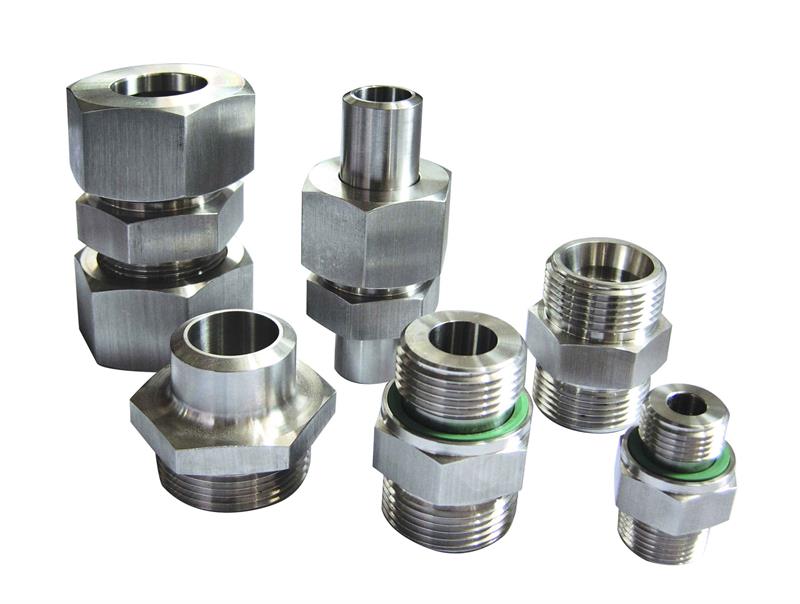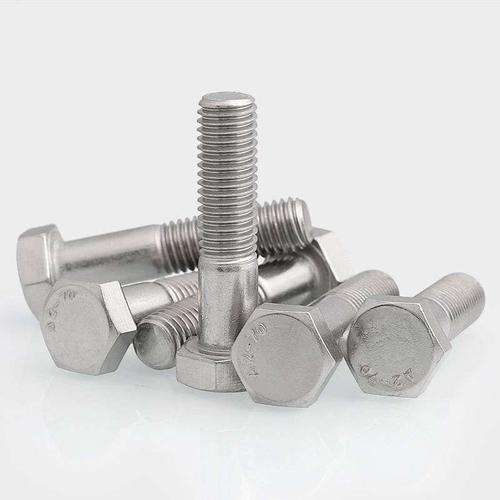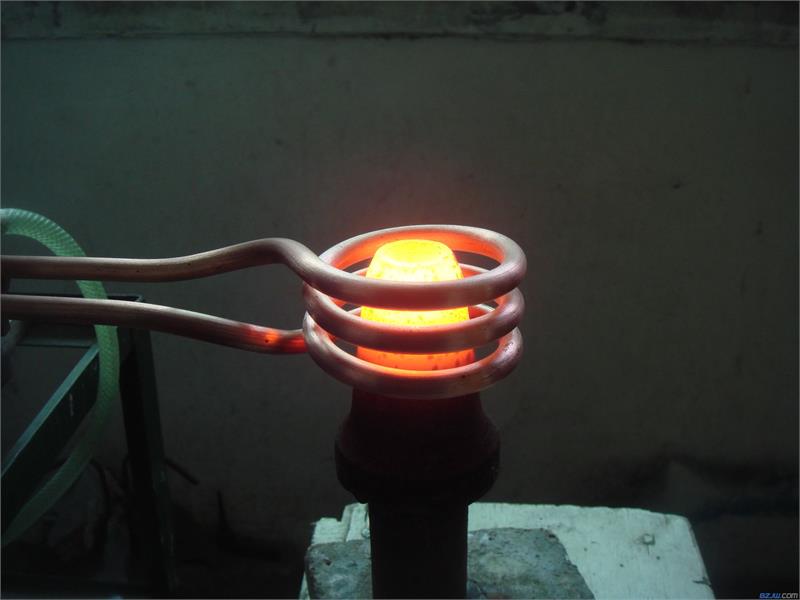Fasteners are widely used, and bolts are naturally indispensable in daily life and industrial production manufacturing. The application scope of bolts covers aerospace, transportation construction, electromechanical machinery, electronic digital, power engineering, home life, and so on. Bolts can be said to be the cornerstone of existence in the industrial field. As long as humans continue to develop industry, bolts play a crucial role.
Bolt processing process flow: Material selection – Spheroidization (softening) annealing – Peeling and descaling – Cold drawing – Cold forging forming – Thread processing – Heat treatment
1. Material selection
Different materials are used based on the strength level of bolts: currently, standard parts in the market mainly include carbon steel, stainless steel, and copper.
carbon steel
Carbon steel has excellent machinability, which can meet a wide range of strength performance combinations, and its cost is also lower compared to other fastener materials.
The mechanical properties of carbon steel are very sensitive to its carbon content, which is usually less than 1.0%. We often distinguish low carbon steel (C% ≤ 0.25%), medium carbon steel (0.25%<C% ≤ 0.45%), high carbon steel (C%>0.45%), and alloy steel (adding alloying elements to plain carbon steel) based on the carbon content in carbon steel materials.
Stainless steel
Performance level:
A. 45, 50, 60, 70, and 80 are mainly composed of austenite (18% Cr, 8% Ni) with good heat resistance, corrosion resistance, and weldability.
B. A1, A2, A4 martensite 13% Cr has poor corrosion resistance, high strength, and good wear resistance.
C. C1, C2, C4 ferritic stainless steel. 18% Cr has good forging resistance and stronger corrosion resistance than martensite.
D. At present, the main imported materials in the market are Japanese products. Mainly divided into SUS302, SUS304, and SUS316 by level.
copper
Commonly used materials are brass and zinc copper alloy. H62, H65, and H68 copper are mainly used as standard parts in the market.
2. Spheroidization (softening) annealing
(1) When spheroidizing (softening) annealing countersunk head screws and hexagonal cylindrical head bolts are produced using the cold heading process, the original structure of the steel directly affects the forming ability during cold heading. The plastic deformation in local areas during the cold heading process can reach 60% -80%, which requires the steel to have good plasticity.
(2) For medium carbon steel and medium carbon alloy steel with a large amount of high-strength fasteners, spheroidization (softening) annealing is performed before cold heading to obtain uniform and fine spheroidized pearlite, in order to better meet practical production needs.
(3) For the softening and annealing of medium carbon steel wire rods, the heating temperature is usually chosen above and below the critical point of the steel for insulation. The heating temperature should generally not be too high, otherwise it will cause three times of cementite precipitation along grain boundaries, causing cold heading cracking.
(4) The wire rods of medium carbon alloy steel are subjected to isothermal spheroidizing annealing. After heating with AC1+(20-30%), the furnace is cooled to slightly lower than Ar1, and the temperature is about 700 degrees Celsius for a period of time. Then, the furnace is cooled to about 500 degrees Celsius before being discharged from the furnace for air cooling. The metallographic structure of the steel changes from coarse to fine, from flaky to spherical, and the cold heading cracking rate will be greatly reduced. The general range of softening annealing temperature for 35 45 ML35 SWRCH35K steel is 715-735 degrees Celsius.
3. Shelling and descaling
The process of peeling and descaling cold heading steel wire rod to remove oxidized iron plate involves peeling and descaling, which includes two methods: mechanical descaling and chemical pickling.
Compared to the chemical pickling process of wire rods, mechanical descaling not only improves productivity but also reduces environmental pollution.
This descaling process includes bending method (commonly using circular wheels with triangular grooves to repeatedly bend wire rods), spray nine method, etc. The descaling effect is good and suitable for carbon steel wire rods used in low strength fasteners (up to grade 6.8).
High strength fasteners (greater than or equal to grade 8.8) are mechanically descaled with wire rods to remove all oxide scales, and then undergo a chemical pickling process to achieve composite descaling.
4. Cold drawing
The cold drawing process has two purposes: firstly, to modify the size of raw materials; The second is to achieve basic mechanical properties of fasteners through deformation reinforcement.
For medium carbon steel and medium carbon alloy steel, there is another purpose, which is to make the sheet-like cementite obtained after controlled cooling of the wire rod break as much as possible during the drawing process, preparing for the subsequent spheroidization (softening) annealing to obtain granular cementite.
5. Cold forging
The forming of the bolt head adopts cold forging plastic processing. Compared with cutting processing, the metal fiber (metal wire) is continuous along the product shape without cutting in the middle, thereby improving the product strength and achieving excellent mechanical properties. The cold heading forming process includes cutting and forming, single station click, double click cold heading, and multi station automatic cold heading.
6. Thread processing
Bolt threads are generally cold processed, allowing thread blanks within a certain diameter range to be formed by rubbing (rolling) the wire plate (mold) under pressure. The plastic flow line of the threaded part can be obtained without being cut off, with increased strength, high accuracy, and uniform quality, which is widely adopted.
The common feature of rolling (rubbing) thread processing is that there is no need to have too many rolling revolutions. If there are too many, the efficiency is low, and the surface of the thread teeth is prone to separation or disorderly threading. On the contrary, if the number of revolutions is too small, the thread diameter is easily out of circle, and the initial pressure during rolling increases abnormally, resulting in a shortened mold life.
7. Heat treatment
According to technical requirements, heat treated high-strength fasteners must undergo quenching and tempering treatment to improve their comprehensive mechanical properties and meet the specified tensile strength and yield ratio of the product.
Due to the large production volume and low price of high-strength bolts, as well as the relatively fine and precise structure of the threaded part, it is required that the heat treatment equipment must have the characteristics of strong production compatibility, high degree of automation, and high quality of heat treatment. To produce high-quality high-strength fasteners, advanced heat treatment technology and equipment are indispensable.
However, there may be quality issues with fasteners during the quenching and tempering process, such as insufficient fire hardness; Uneven hardness in the quenched state; Quenching deformation exceeding tolerance; Quenching and cracking are often related to the production of raw materials, quenching heating, and quenching cooling. Properly formulating heat treatment processes and standardizing production operations can often avoid such quality accidents.
Post time: Oct-23-2023




